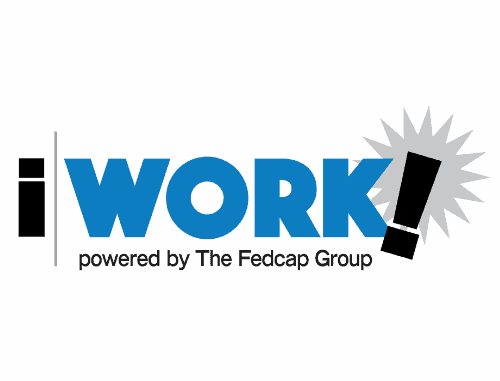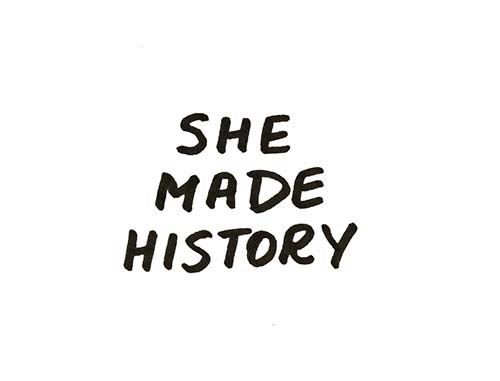The Fedcap Group Launches iWORK!

April 5, 2021
“Let us realize that the privilege to work is a gift, the power of work is a blessing, the love of work is success.” – David O. McKay
Work matters. If we did not know it before, the pandemic reminded us. Work generates self- esteem, hope, a sense of belonging, a confidence in the future.
As states and cities across the nation transform lives and communities hit hardest by the pandemic, The Fedcap Group is launching iWORK! – a clarion call for leaving no one behind and giving every person a fair shot and an equal chance to get ahead with a job at a living wage. The iWORK! campaign will leverage the voices of people who have overcome barriers to employment to demonstrate how the path to a good job is a life-changing experience. We’ll amplify this message—with data and research—through podcasts, social media, panel discussions, white papers and advocacy.
Helping people of all backgrounds obtain and maintain a good job is The Fedcap Group’s contribution to counter the exclusion and marginalization that exists, especially for people of color and people with disabilities. These circumstances have only worsened during the pandemic:
- 9.9 percent of Black workers and 8.5 percent of Latino workers were unemployed in February 2021, compared to 5.6 percent of white workers.
- 20 percent of people with disabilities participated in the labor force as opposed to 66 percent of people without disabilities during the pandemic in December 2020. Recent research also suggests that only 15 percent of working-age adults supported by state I/DD agencies held an integrated job.
- 21.2 percent of workers without a high school degree were unemployed in April 2020 compared to 8.4 percent of workers with a bachelor’s degree or higher. The gap between educated and less-educated workers remained in December 2020.
As The Fedcap Group continues our mission of over eight decades—to address inequities and injustices with access to meaningful work at competitive wages—we hope to garner more champions in this struggle. Our iWORK! campaign will:
- Build a virtual community connecting individuals who value the importance of work to something larger–a movement that promotes work for all and exhibits the impact an employed citizenry can have on the lives of individuals, families and our communities.
- Demonstrate, through people’s personal experiences, why work matters.
- Build a compelling voice to advocate for public policy that will change the job landscape.
- Provide education to business … why hiring people with disabilities and other barriers to economic well-being matters to their future bottom line.
Findings show that benefits of hiring people with disabilities and other employment barriers includes improvements in profitability (e.g., profits and cost-effectiveness, turnover and retention, reliability and punctuality, employee loyalty, company image), competitive advantage (e.g., diverse customers, customer loyalty and satisfaction, innovation, productivity, work ethic, safety), inclusive work culture, and ability awareness. The benefits for people hired includes improved quality of life and income, enhanced self-confidence, expanded social network, and a sense of community.
In other words, the inclusion of people of diverse backgrounds and abilities encourages everyone to be their best selves.
As our country starts to slowly come back from the economic and social crises resulting from the pandemic, and as businesses start opening their doors and hiring staff, we want to ensure that those hired represent all of society. Stay tuned to learn how you can join The Fedcap Group’s iWORK! campaign.
5 abril 2021
“Debemos darnos cuenta de que el privilegio de trabajar es un don, que el poder del trabajo es una bendición, que el amor por el trabajo es el éxito.”
David O. McKay
El trabajo importa. Si no lo sabíamos antes, la pandemia nos lo recordó. El trabajo genera autoestima, esperanza, sentido de pertenencia, y confianza en el futuro.
A medida de que tanto los estados como las ciudades de toda la nación transforman las vidas y las comunidades más afectadas por la pandemia, ¡The Fedcap Group está lanzando iWORK!; un llamado con clarín, para no dejar a nadie atrás y dar a cada persona tanto una oportunidad justa, así como igualdad de oportunidades para salir adelante con un trabajo de un salario digno. ¡La campaña iWORK! aprovechará las voces de las personas que han superado las dificultades para el empleo; demostrando cómo el camino hacia un buen trabajo es una experiencia que les cambia la vida.
Amplificaremos este mensaje; con datos e investigación, a través de “podcasts”, redes sociales, mesas redondas, reportes informativos, así como defensa y apoyo. Ayudar a personas de todos los orígenes a obtener y mantener un buen trabajo, es la contribución del Fedcap Group, para contrarrestar la exclusión y marginación que existe; especialmente para las personas de color y las personas con discapacidades. Estas circunstancias sólo han empeorado durante la pandemia:
- 9.9 por ciento de los trabajadores de color y 8.5 por ciento de los latinos estuvieron desempleados en febrero 2021; en comparación con 5.6 por ciento de los trabajadores anglosajones.
- El 20 por ciento de las personas con discapacidades participaron en la fuerza laboral, en comparación con el 66 por ciento de las personas sin discapacidad durante la pandemia en diciembre 2020. Investigaciones recientes también sugieren que sólo el 15 por ciento de los adultos en edad de trabajar, apoyados por agencias estatales de “I/DD” mantenían un trabajo incorporado.
- El 21.2 por ciento de los trabajadores sin título de secundaria estuvieron desempleados en abril 2020; en comparación con el 8.4 por ciento de los trabajadores con una licenciatura o diploma superior. La brecha laboral entre los trabajadores educados y los menos educados se mantuvo en diciembre 2021.
A medida que The Fedcap Group continúa nuestra misión de más de ocho décadas; abordando las desigualdades y las injusticias para el acceso a un trabajo significativo con salarios competitivos; nosotros esperamos conseguir más campeones en esta lucha. Nuestra campaña iWORK! :
- Construirá una comunidad virtual que conecte a las personas que valoran la importancia del trabajo con algo más grande; un movimiento que promueve el trabajo para todos y muestre el impacto que una ciudadanía con empleo puede tener en la vida de las personas, las familias y nuestras comunidades.
- Demostrará a través de las experiencias personales de los individuos: por qué el trabajo importa.
- Construirá una voz convincente para abogar por políticas públicas que cambien el panorama laboral.
- Proporcionará educación a las empresas; del por qué la contratación de personas con discapacidades y otras dificultades al bienestar económico importan en los resultados futuros de ellos.
Los hallazgos muestran que los beneficios de contratar a personas con discapacidades y otras dificultades para el empleo, incluyen: mejoras en la rentabilidad (por ejemplo, beneficios y costo-rendimiento, reemplazamiento y retención, fiabilidad y puntualidad, lealtad de los empleados, imagen de la empresa), ventaja competitiva (por ejemplo, clientes diversos, lealtad y satisfacción del cliente, innovación, productividad, ética de trabajo, seguridad), cultura de trabajo inclusiva y percatación sobre las capacidades. Los beneficios para las personas contratadas incluyen: una mejor calidad de vida e ingresos económicos, una mayor confianza en sí mismos, una red social ampliada y un sentido de comunidad.
En otras palabras, la inclusión de personas de diversos orígenes y capacidades; alienta a todos a ser lo mejor de sí mismos.
A medida que nuestro país comienza a regresar lentamente de la crisis económica y social, resultantes de la pandemia, y a medida que las empresas comienzan a abrir sus puertas y contratar personal; queremos asegurarnos de que los contratados representen a toda la sociedad. Mantente atento para saber cómo puedes unirte a la campaña iWORK! del Fedcap Group.









